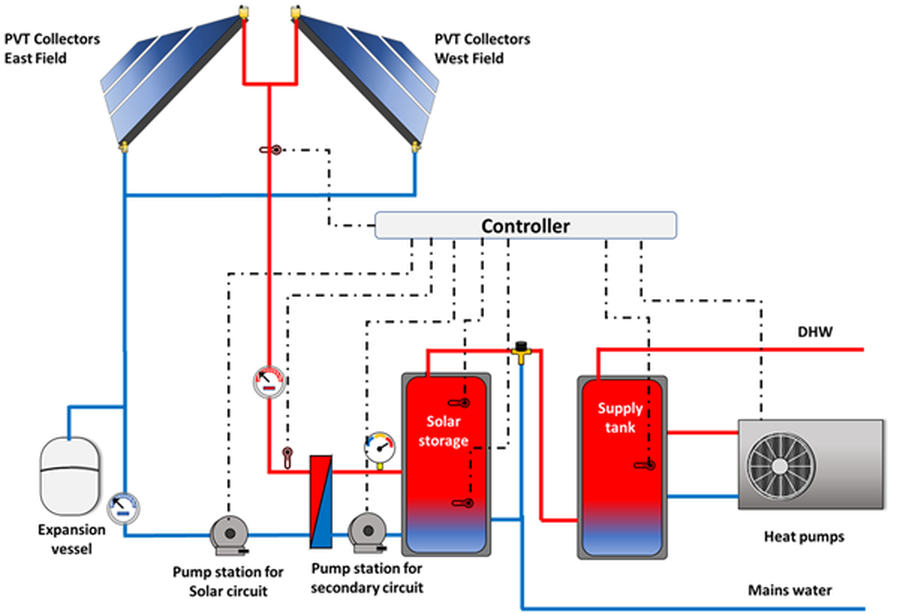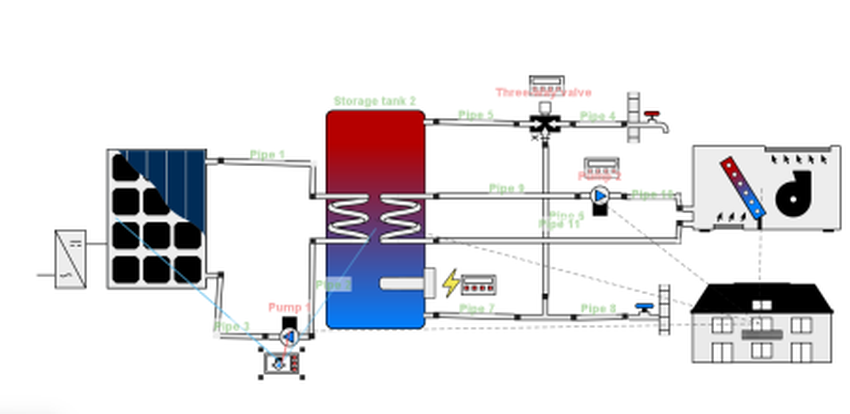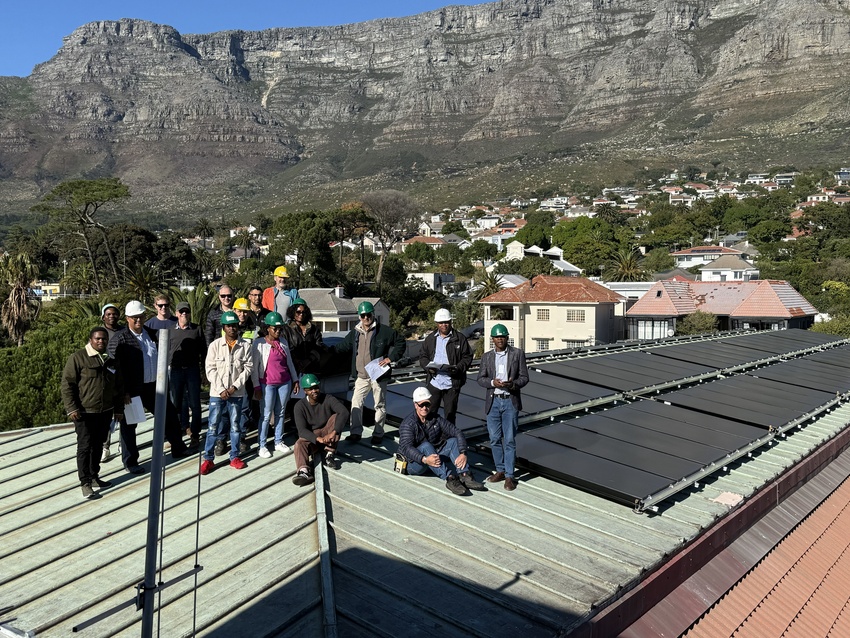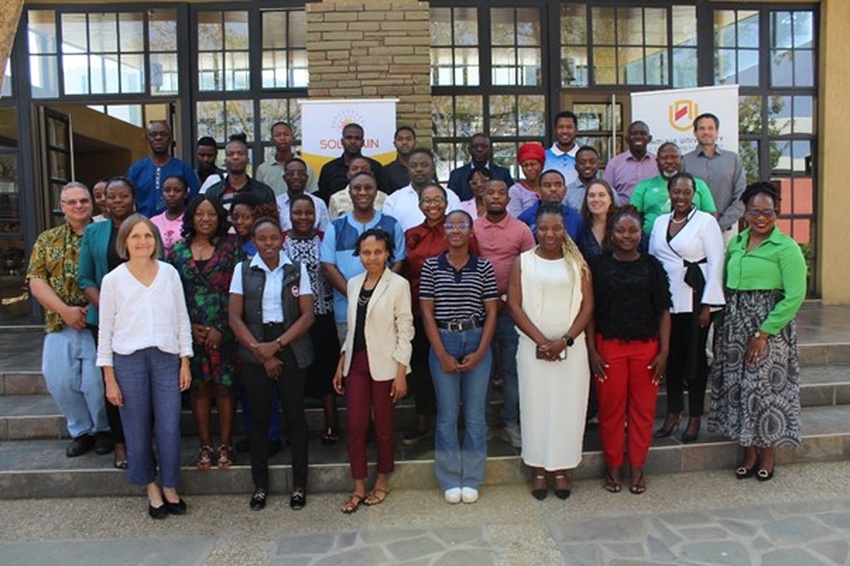A private hospital in Cape Town has implemented a pioneering hybrid renewable-energy system by Greenline Africa, with support from CRSES at Stellenbosch University, AEE INTEC, and co-funding from SOLTRAIN. Combining photovoltaic–thermal (PVT) collectors, heat pumps, and heat recovery, the installation supplies 100% of the hospital’s hot-water demand from renewable sources - cutting costs, emissions, and reliance on grid electricity.
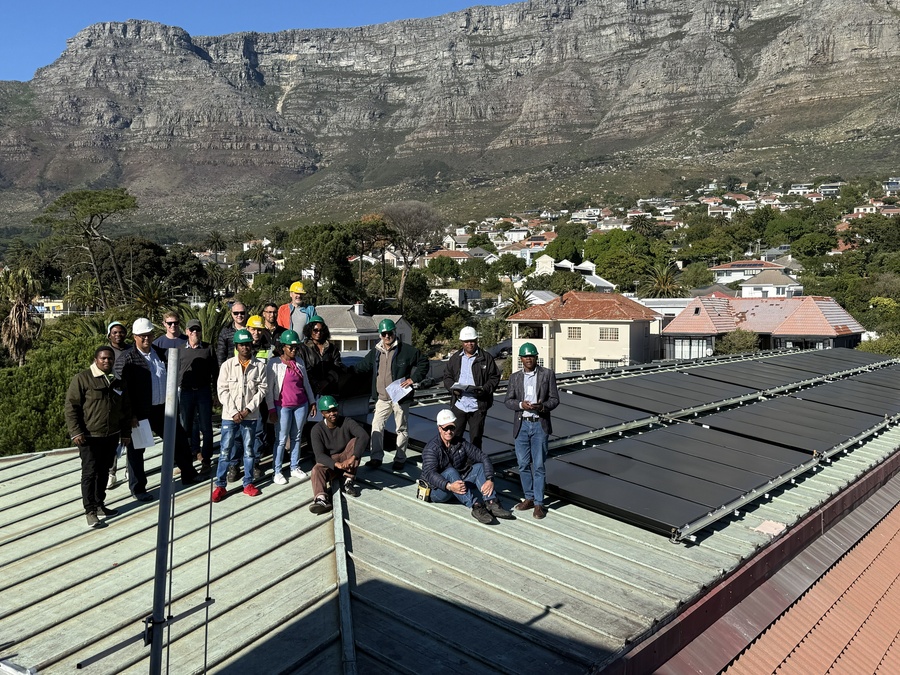
The hybrid renewable-energy system has been implemented at a private hospital in Cape Town by Greenline Africa, with technical support from the Centre for Renewable and Sustainable Energy Studies (CRSES) at Stellenbosch University and AEE INTEC. Co-funded by SOLTRAIN, the project includes a monitoring phase of more than one year and demonstrates how hybridized renewable systems can reduce electricity consumption, lower operating costs, and cut greenhouse-gas emissions in large institutional facilities.
The system integrates photovoltaic–thermal (PVT) collectors covering 200 m² with modular water-to-water heat pumps (100 kW nominal heating capacity) and a heat-recovery subsystem to meet 100 % of the hospital’s domestic hot-water demand. The PVT field simultaneously generates heat and electricity—solar thermal energy provides direct water heating, while solar electricity offsets the power used by the heat pumps. Together, these technologies enable fully renewable hot-water production on an annual energy balance.
The installation includes 12 500 L of thermal storage, divided into a solar preheat tank and a main supply tank, to maximize solar utilization and overall system efficiency. Heat recovery from the building’s chiller circuit further enhances heat-pump performance and reduces running costs.
The system is expected to save about R 22.6 million in energy costs and avoid 3 887 tonnes of CO₂e over its 25-year lifespan. With SOLTRAIN support and available tax incentives, the estimated payback period is 4.6 years (around 7.9 years without subsidies).
Initial performance results are promising and will be published once full monitoring data become available. The project clearly demonstrates how solar-thermal hybrid systems can be effectively combined with complementary technologies to achieve 100 % renewable energy supply in large organizations.
